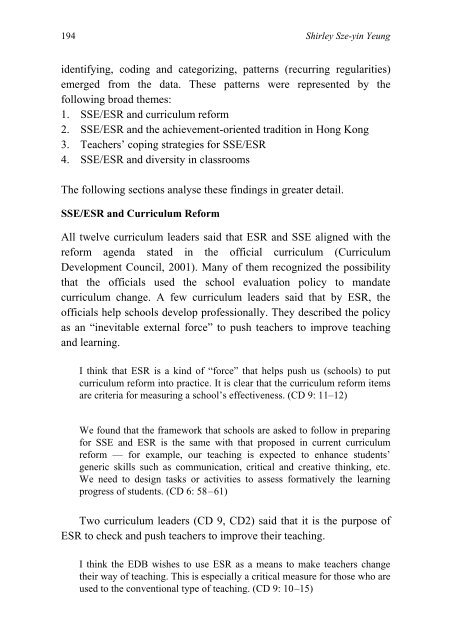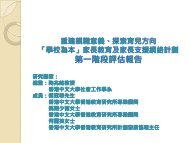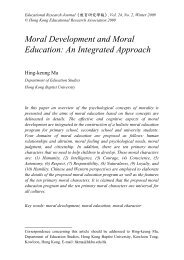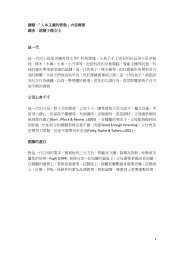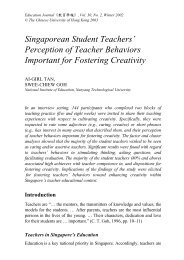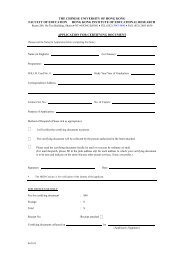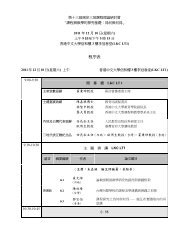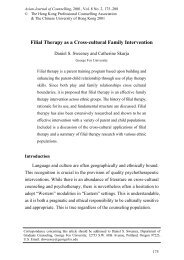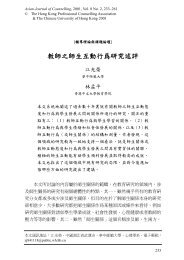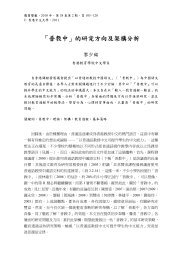Using School Evaluation Policy to Effect Curriculum Change? A ...
Using School Evaluation Policy to Effect Curriculum Change? A ...
Using School Evaluation Policy to Effect Curriculum Change? A ...
You also want an ePaper? Increase the reach of your titles
YUMPU automatically turns print PDFs into web optimized ePapers that Google loves.
194 Shirley Sze-yin Yeung<br />
identifying, coding and categorizing, patterns (recurring regularities)<br />
emerged from the data. These patterns were represented by the<br />
following broad themes:<br />
1. SSE/ESR and curriculum reform<br />
2. SSE/ESR and the achievement-oriented tradition in Hong Kong<br />
3. Teachers’ coping strategies for SSE/ESR<br />
4. SSE/ESR and diversity in classrooms<br />
The following sections analyse these findings in greater detail.<br />
SSE/ESR and <strong>Curriculum</strong> Reform<br />
All twelve curriculum leaders said that ESR and SSE aligned with the<br />
reform agenda stated in the official curriculum (<strong>Curriculum</strong><br />
Development Council, 2001). Many of them recognized the possibility<br />
that the officials used the school evaluation policy <strong>to</strong> mandate<br />
curriculum change. A few curriculum leaders said that by ESR, the<br />
officials help schools develop professionally. They described the policy<br />
as an “inevitable external force” <strong>to</strong> push teachers <strong>to</strong> improve teaching<br />
and learning.<br />
I think that ESR is a kind of “force” that helps push us (schools) <strong>to</strong> put<br />
curriculum reform in<strong>to</strong> practice. It is clear that the curriculum reform items<br />
are criteria for measuring a school’s effectiveness. (CD 9: 11–12)<br />
We found that the framework that schools are asked <strong>to</strong> follow in preparing<br />
for SSE and ESR is the same with that proposed in current curriculum<br />
reform — for example, our teaching is expected <strong>to</strong> enhance students’<br />
generic skills such as communication, critical and creative thinking, etc.<br />
We need <strong>to</strong> design tasks or activities <strong>to</strong> assess formatively the learning<br />
progress of students. (CD 6: 58–61)<br />
Two curriculum leaders (CD 9, CD2) said that it is the purpose of<br />
ESR <strong>to</strong> check and push teachers <strong>to</strong> improve their teaching.<br />
I think the EDB wishes <strong>to</strong> use ESR as a means <strong>to</strong> make teachers change<br />
their way of teaching. This is especially a critical measure for those who are<br />
used <strong>to</strong> the conventional type of teaching. (CD 9: 10–15)


